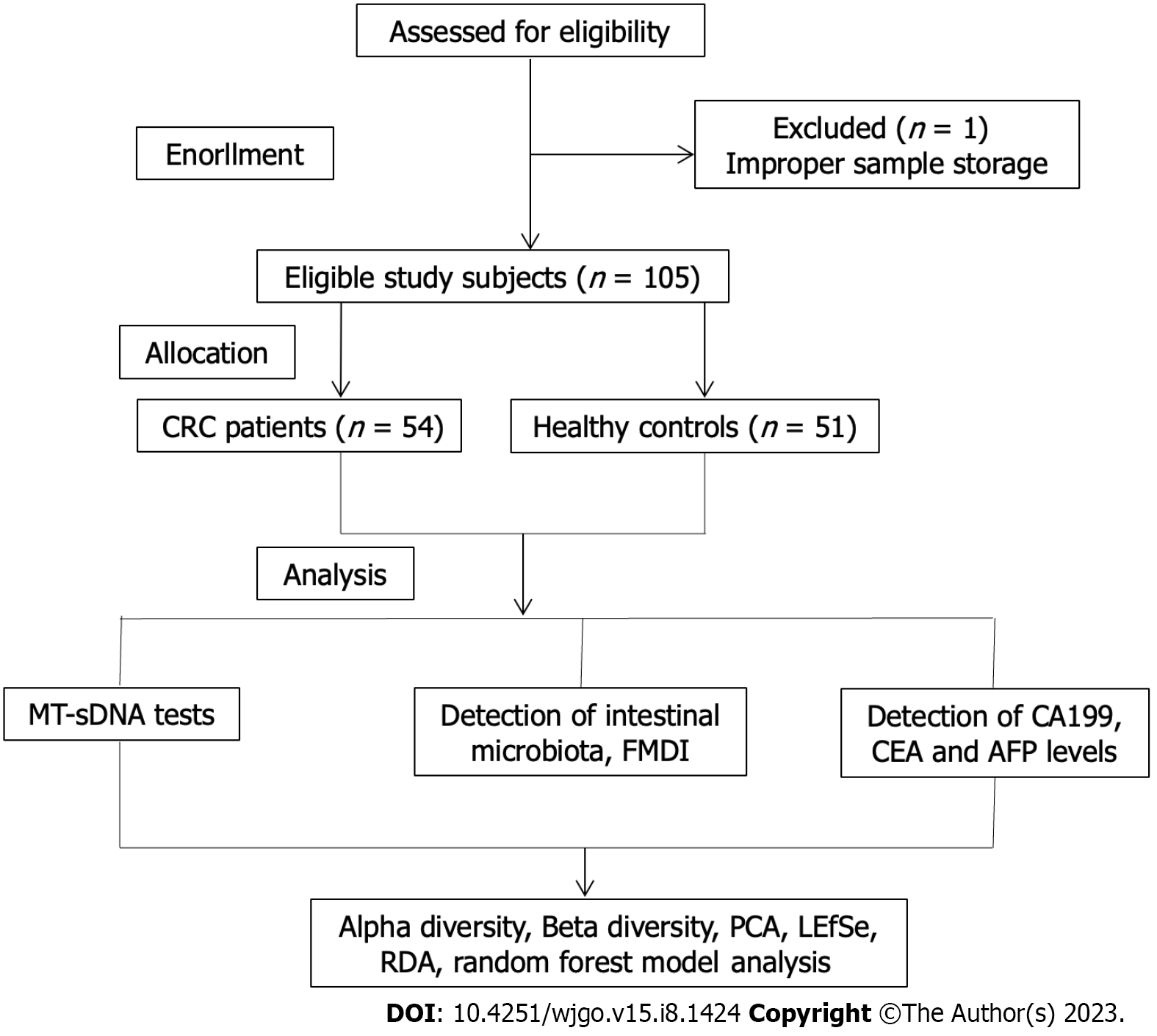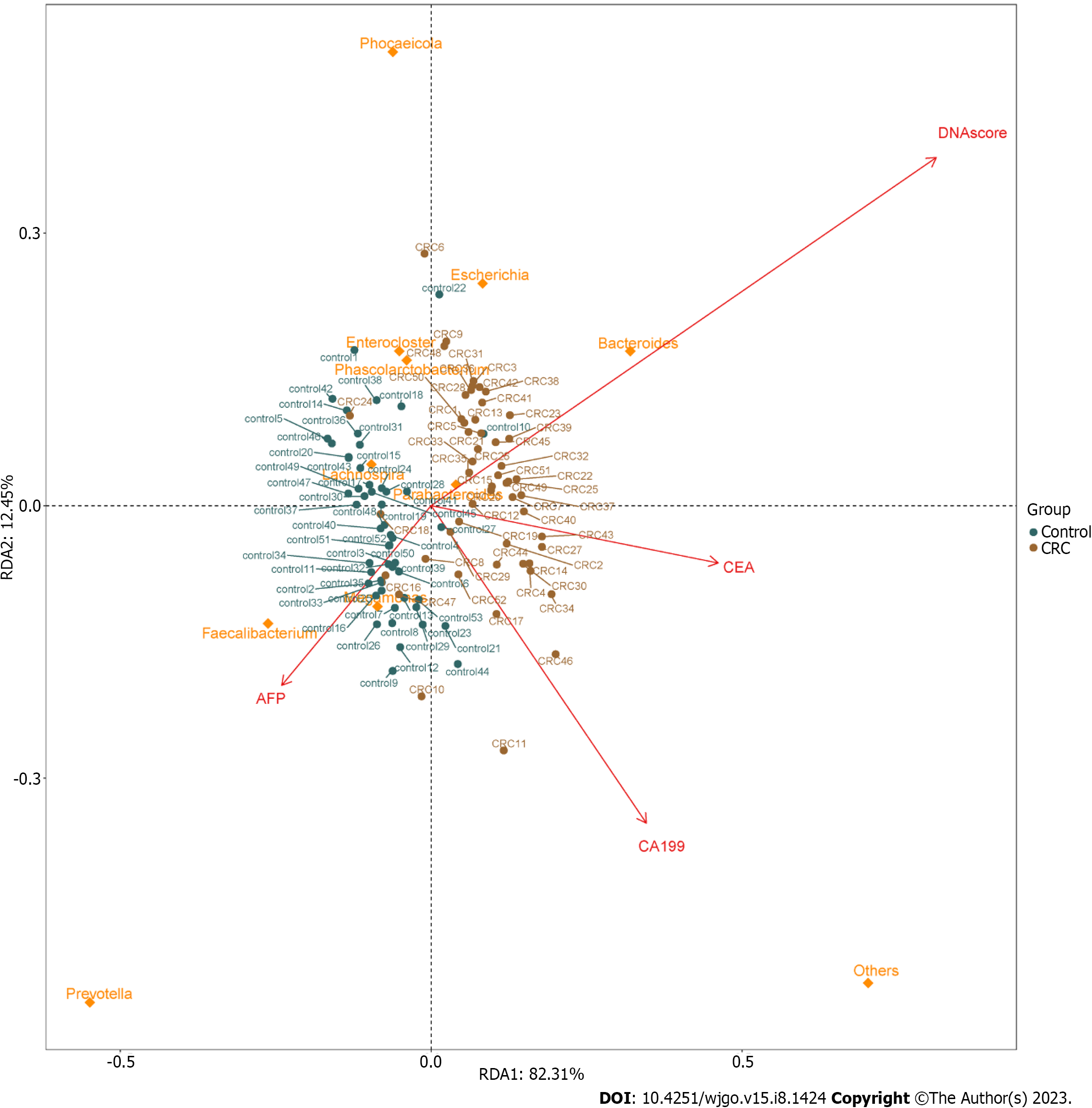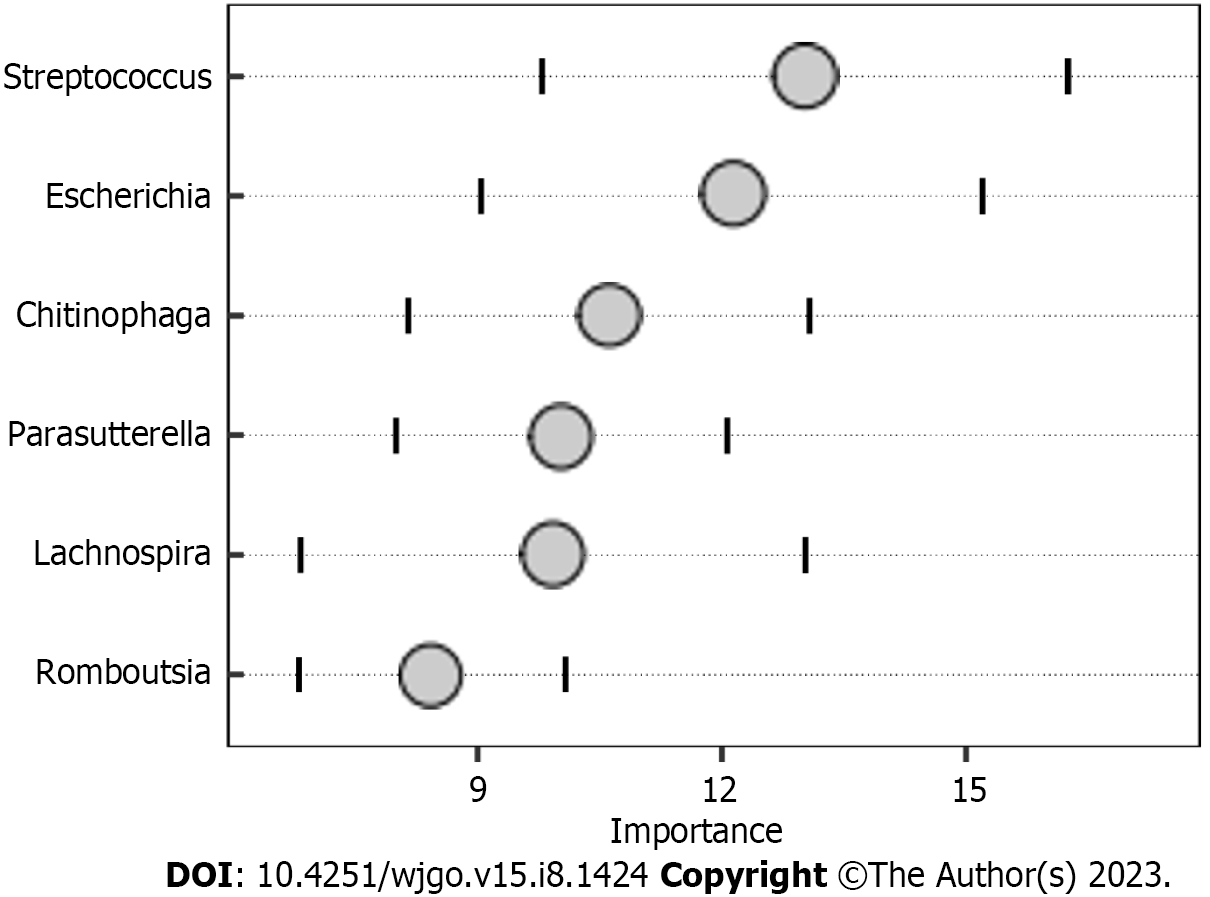Copyright
©The Author(s) 2023.
World J Gastrointest Oncol. Aug 15, 2023; 15(8): 1424-1435
Published online Aug 15, 2023. doi: 10.4251/wjgo.v15.i8.1424
Published online Aug 15, 2023. doi: 10.4251/wjgo.v15.i8.1424
Figure 1 Flow chart of participant selection.
CRC: Colorectal cancer; MT-sDNA: Multi-target stool DNA; FMDI: Fecal microbiota diagnostic index; CEA: Carcinoembryonic antigen; AFP: Alpha-fetoprotein; CA199: Carbohydrate antigen 199; PCA: Principal component analysis; RDA: Redundancy analysis; LEfSe: Linear discriminant analysis effect size.
Figure 2 Differences in fecal microbiota between colorectal cancer patients and healthy controls.
A: The clustering tree with red areas and green areas represents different groups. The red nodes in the branches represent microbial groups that play an important role in the red group, the green nodes represent microbial groups that play an important role in the green group, and the yellow nodes represent microbial groups that do not play an important role in either group. The genus names are shown in the legend on the right; B: Linear discriminant analysis (LDA) score histogram to identify diverse bacterial genus (LDA score ≥ 4, P < 0.05). CRC: Colorectal cancer.
Figure 3 Redundancy analysis in bacterial community characteristics (genus level) and tumor markers.
Dots in the figure represent sample names; arrows indicate tumor biomarkers; inverted triangle represents species. CRC: Colorectal cancer; CEA: Carcinoembryonic antigen; AFP: Alpha-fetoprotein; CA199: Carbohydrate antigen 199; PCA: Principal component analysis; RDA: Redundancy analysis.
Figure 4 The biomarker identification results by random forest model.
The lattice plots show the identified biomarkers and their importance, with retention importance higher than 1.5.
Figure 5 Receiver operating characteristic curves of different detection methods to assess colorectal cancer.
CEA: Carcinoembryonic antigen; AFP: Alpha-fetoprotein; CA199: Carbohydrate antigen 199; PCA: Principal component analysis; AUC: Area under the receiver operating characteristic curve.
- Citation: Fan JQ, Zhao WF, Lu QW, Zha FR, Lv LB, Ye GL, Gao HL. Fecal microbial biomarkers combined with multi-target stool DNA test improve diagnostic accuracy for colorectal cancer. World J Gastrointest Oncol 2023; 15(8): 1424-1435
- URL: https://www.wjgnet.com/1948-5204/full/v15/i8/1424.htm
- DOI: https://dx.doi.org/10.4251/wjgo.v15.i8.1424













